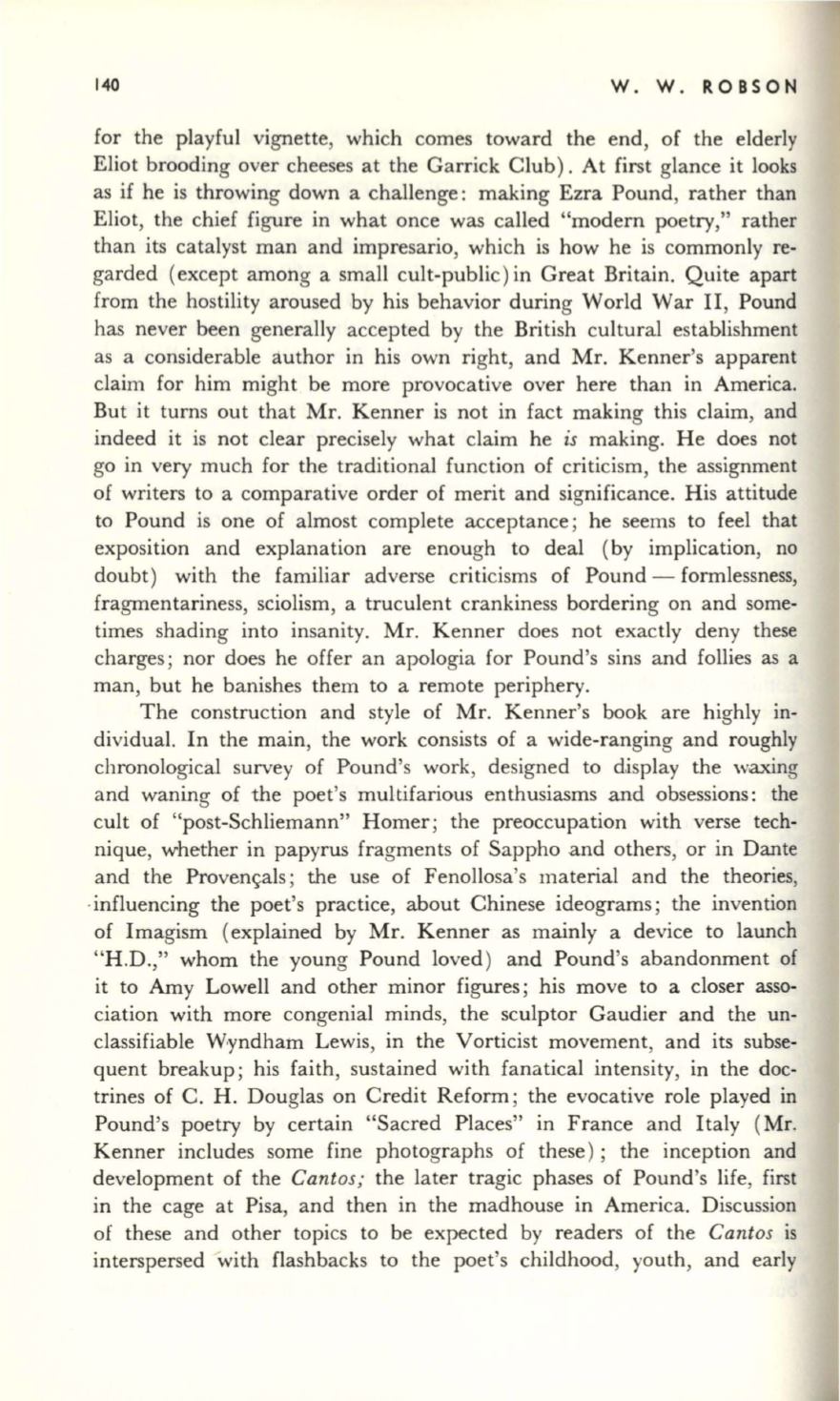
140
W. W.
ROBSON
for the playful vignette, which comes toward the end, of the elderly
Eliot brooding over cheeses at the Garrick Club). At first glance it looks
as if he is throwing down a challenge: making Ezra Pound, rather than
Eliot, the chief figure in what once was called "modern poetry," rather
than its catalyst man and impresario, which is how he is commonly re–
garded (except among a small cult-public) in Great Britain. Quite apart
from the hostility aroused by his behavior during World War II, Pound
has never been generally accepted by the British cultural establishment
as a considerable author in his own right, and Mr. Kenner's apparent
claim for him might be more provocative over here than in America.
But it turns out that Mr. Kenner is not in fact making this claim, and
indeed it is not clear precisely what claim he
is
making. He does not
go in very much for the traditional function of criticism, the assignment
of writers to a comparative order of merit and significance. His attitude
to Pound is one of almost complete acceptance; he seems to feel that
exposition and explanation are enough to deal (by implication, no
doubt ) with the familiar adverse criticisms of Pound - formlessness,
fragrnentariness, sciolism, a truculent crankiness bordering on and some–
times shading into insanity. Mr. Kenner does not exactly deny these
charges; nor does he offer an apologia for Pound's sins and follies as a
man, but he banishes them to a remote periphery.
The construction and style of Mr. Kenner's book are highly in–
dividual.
In
the main, the work consists of a wide-ranging and roughly
chronological survey of Pound's work, designed to display the waxing
and waning of the poet's multifarious enthusiasms and obsessions : the
cult of "post-Schliemann" Homer; the preoccupation with verse tech–
nique, whether in papyrus fragments of Sappho and others, or in Dante
and the Proven<;als; the use of Fenollosa's material and the theories,
.influencing the poet's practice, about Chinese ideograms ; the invention
of Imagism (explained by Mr. Kenner as mainly a device to launch
"H.D.," whom the young Pound loved ) and Pound's abandonment of
it to Amy Lowell and other minor figures ; his move to a closer asso–
ciation with more congenial minds, the sculptor Gaudier and the un–
classifiable Wyndham Lewis, in the Vorticist movement, and its subse–
quent breakup ; his faith , sustained with fanatical intensity, in the doc–
trines of C. H. Douglas on Credit Reform ; the evocative role played in
Pound's poetry by certain "Sacred Places" in France and Italy (Mr.
Kenner includes some fine photographs of these ); the inception and
development of the
Cantos;
the later tragic phases of Pound's life, first
in the cage at Pisa, and then in the madhouse in America. Discussion
of these and other topics to be expected by readers of the
Cantos
is
interspersed with flashbacks to the poet's childhood, youth, and early


